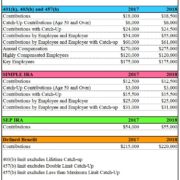Tax Diversification 2017

Money Matters – Skloff Financial Group Question of the Month – June 1, 2017
By Aaron Skloff, AIF, CFA, MBA
Q: While we are familiar with asset allocation and portfolio diversification, we are not familiar with tax diversification. What is tax diversification and what advantages may it provide?
A: The Problem — Understanding Tax Diversification
Many investors understand the advantages of asset allocation – owning a balanced portfolio optimizes risk and return, and the advantages of portfolio diversification – owning numerous investments to optimize risk and return. But, many investors are less familiar with tax diversification and the advantages it may provide. Like poor asset allocation and poor portfolio diversification, poor tax diversification can be detrimental to your wealth.
The Solution — Tax Diversification
Investments can reside in three types of accounts: taxable, tax free and tax deferred. Investments in taxable accounts generate tax obligations in the immediate tax year. Investments in tax free accounts do not generate tax obligations. Investments in tax deferred accounts generate tax obligations in future tax years.
Are You Interested in Learning More?
Basics of Tax Diversification. The basic premise of tax diversification is maintaining exposure to taxable, tax free and tax deferred accounts. Since the U.S. and various states Treasury departments refuse to publish future tax rates investors cannot plan with certainty what their future obligations may be, so they must diversify their tax risk. As recently as 1980, the top federal marginal income tax rate (TFMITR) was 70%. In 2017, the TFMITR is 39.6%.
Investments in taxable accounts that generate interest and/or short-term capital gains are taxed at your income tax rate (top rate is 39.6%), while investments that generate long-term capital gains may be subject to the more attractive top federal capital gains rate of 20%. Investments in taxable accounts that generate dividends are generally taxed at the same tax rate as long term capital gains. For those filing single with an income of $200,000 or more ($250,00 or more if married and filing jointly), your investment gains and dividends may also be subject to 3.8% investment surtax — resulting in a cumulative 23.8% tax. Investments in tax free accounts do not generate taxes. Investments in tax deferred accounts could reduce your taxable income today and may subject your investments to lower tax rates in the future (e.g.: during retirement).
Taxable Account Example. If you were paid $1,000 of salary and subsequently paid $396 in income taxes, you can invest $604 into a taxable account (based on a 39.6% income tax rate, but excluding FICA and other taxes). If your investment earned a 6% interest rate each year for 12 years you would be left with $902 (based on a 39.6% income tax and a 3.8% investment surtax).
Tax Free Account Example. If you were paid $1,000 of salary and subsequently paid $396 in income taxes, you can invest $604 into a tax free account (e.g.: Roth 401(k), Roth 403(b), Roth 457(b) or 529). If your investment earned a 6% interest rate each year for 12 years you would be left with $1,215 after taxes. Your account would be worth 35% more than the same investment in the taxable account – all attributable to the benefits of tax free investing.
Tax Deferred Account Example. If you were paid $1,000 of salary, you can invest $1,000 into a tax deferred account (e.g.: 401(k), 403(b), 457(b), SEP IRA, Traditional IRA). If your investment earned a 6% interest rate each year for 12 years you would be left with $1,423 after taxes (based on a 25% tax rate upon withdrawal). Your account would be worth 58% more than the same investment in the taxable account –attributable to the benefits of tax deferred investing and a lower tax rate upon withdrawal. Under most circumstances, you must begin taking Required Minimum Distributions (RMDs) from tax deferred accounts after you turn 70 ½ years old.
Importantly, there are estate and financial planning strategies to avoid RMDs and the taxes on those withdrawals.
Action Steps
Tax Diversify. Diversify your investment accounts with the three types of accounts discussed above. Work closely with your Register Investment Adviser (RIA) to design accounts to optimize return, risk and taxes. Also, work closely with your RIA to optimize taxes upon withdrawal.
Aaron Skloff, Accredited Investment Fiduciary (AIF), Chartered Financial Analyst (CFA), Master of Business Administration (MBA) is CEO of Skloff Financial Group, a Registered Investment Advisory firm specializing in financial planning, investment management and benefits for small to middle sized companies. He can be contacted at www.skloff.com or 908-464-3060.













